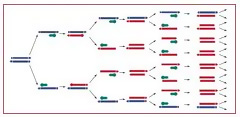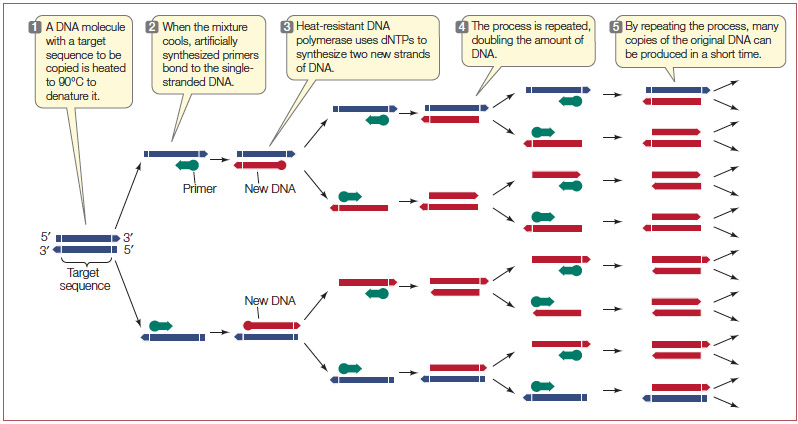The polymerase chain reaction (PCR) is a widely used technique in molecular biology, microbiology, forensics, and other disciplines. With PCR, it is possible to amplify a single piece of DNA and generate millions of copies of the original DNA molecule.
By using PCR in diagnostic tests, researchers can determine whether a particular pathogen is present in a sample. The test is set up so that the reaction mixture contains a pair of oligonucleotide primers that match up with a region of a pathogen's DNA. If the pathogen is present in the sample, a fragment of its DNA will be amplified by the PCR technique, producing a positive result. Primers can be created to identify any pathogen with a known DNA sequence. Because PCR requires very little starting material, a small test sample is all that is required to set up many reactions, each using a primer pair corresponding to a different pathogen.
For a summary of how PCR works, click the image below.
You work for a public health agency. Due to the recent outbreak of respiratory illnesses, you have been sent five respiratory swabs taken from ill patients. Your goal is to identify the most likely cause of the illnesses using PCR so that doctors can make the appropriate treatment decisions.



